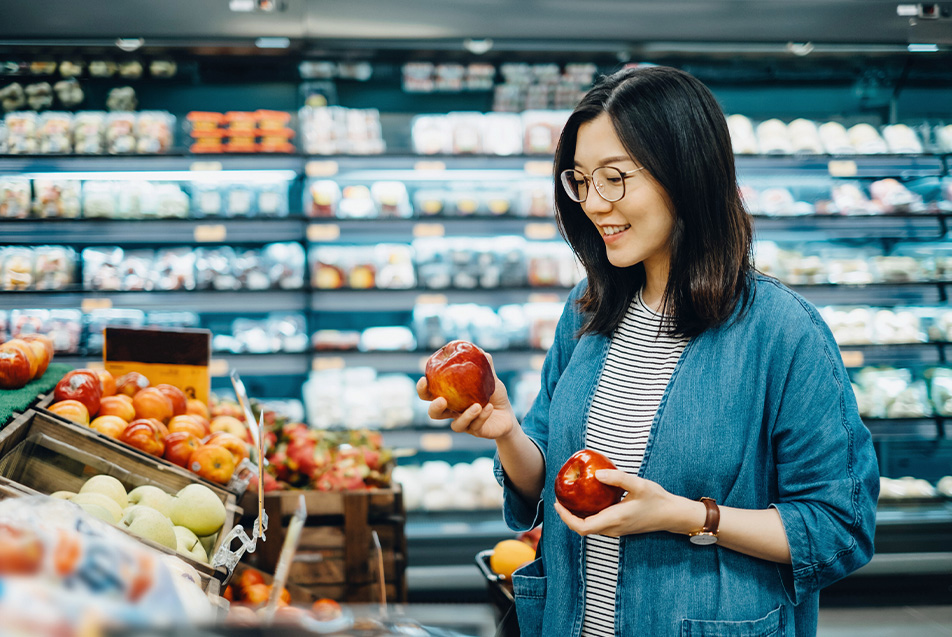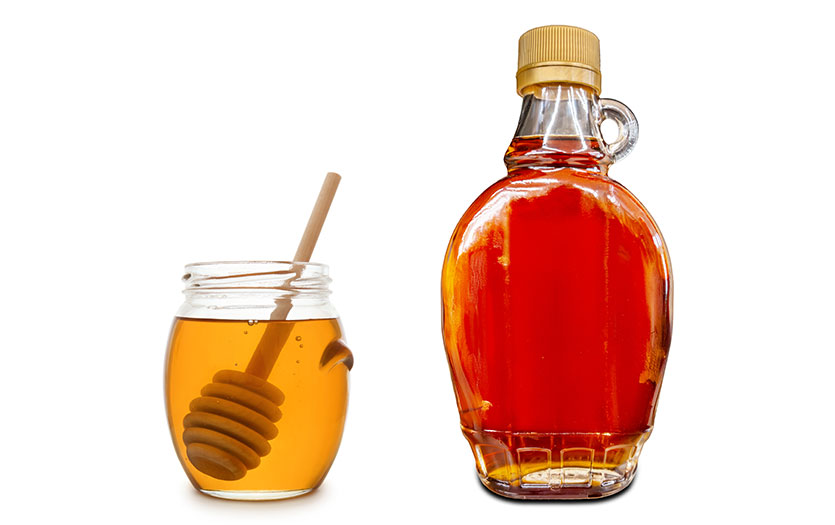
Losing weight or simply maintaining a healthy one can be a challenge, especially when at the supermarket. Thankfully, Amanda Sytsma, RDN, PPG – Weight Management & Bariatric Surgery, and Amie Dent, RDN, PPG – Weight Management & Bariatric Surgery, offer tools for navigating the grocery store, tips on saying "no" to temptation and best practices to ensure lifelong success.
What are some of the biggest mistakes people make at the grocery store?
Shopping when hungry is one of the biggest mistakes people make when heading to the grocery store. It’s always best to have a full stomach or shop after you eat. It’s also a bad idea to grocery shop without a plan or grocery list. Walking aimlessly up and down the aisles puts you at an increased risk of impulse buying. Instead, start off by organizing your list according to the location of foods in the supermarket and only clip coupons for the items you know you need.
How can preparation and menu planning help?
By taking a small amount of time to prepare or menu plan before stepping foot into a grocery store you are actively reducing your time spent in that store and the number of chances you have to impulse buy items like cookies, chips, junk food and high-calorie meals. Menu planning also allows you to cut calories or fat by choosing low-calorie and low-fat meals ahead of time.
What are some general rules for healthy grocery shopping?
- Always shop the perimeter of the store, that’s where fresh foods and produce are located.
- Always utilize a grocery list and remember to keep a running list of foods you need to replace.
- Always read your food labels for accurate nutritional information.
Should I take people with me or shop alone?
When possible, it’s best to shop alone or with like-minded people who are also trying to make conscientious and nutritious choices about their health. Shopping with young children or bad influencers can lead to poor decisions and unhealthy food purchases you weren't intending on.
What should a healthy, balanced cart look like at the end of a trip?
As you leave the grocery store your cart should be filled with fresh fruits and vegetables, lean cuts of meat including skinless chicken breast, pork loin, 90/10 beef, turkey, ham, and fish. If you are trying to cut calories, you can opt for low-fat dairy options such as fat-free or 1% low-fat milk, low-fat or non-fat yogurt, and lower fat cheeses like low-fat ricotta and part-skim mozzarella. For a fiber boost, look for bread labeled “whole grain” and “whole wheat”. Also, remember that reduced-calorie bread has more fiber than white offering you more bang for your buck, allowing you two slices for the same calories as one regular slice. Most importantly, stay away from fried or breaded products in the freezer section. If you want dessert, make mindful choices and opt for low-fat or fat-free frozen desserts.
How can someone who wrestles with food temptation avoid pitfalls at the grocery store?
It’s never easy staring temptation in the face, but services like Kroger Click-List, Meijer Curbside Pickup or Boxed can be a saving grace for someone who struggles with saying no.
People often think buying healthy food is more expensive. Any tips for cost savings?
By buying seasonal produce you can maximize freshness and minimize cost. Canned or frozen goods are wonderful staples, just be sure you’re choosing frozen vegetables without sauces, frozen fruit without added sugar and canned items packed in water instead of juice or syrup. Also, choose canned fish in water instead of oil, purchase lean meats when they are on sale and freeze them for a later time. You can also try making large batch items such as vegetable soup or chicken chili, making the food last longer.
A lot of people shop at bulk stores, are there any tips for purchasing and portion control?
While shopping in bulk can be convenient and economical, it can also sabotage your potential weight loss and cause us to overeat. A few things to remember when at the Costco or Sam’s Club:
- Avoid samples! They are usually very high-calorie and high-fat products. Instead, walk around the store and determine which 1 or 2 items you want to sample instead of sampling every product.
- Once you get home, immediately portion out your foods into smaller zip lock bags. That way items like cereal, crackers and chips will be ready, saving you time while preventing mindless overeating.



